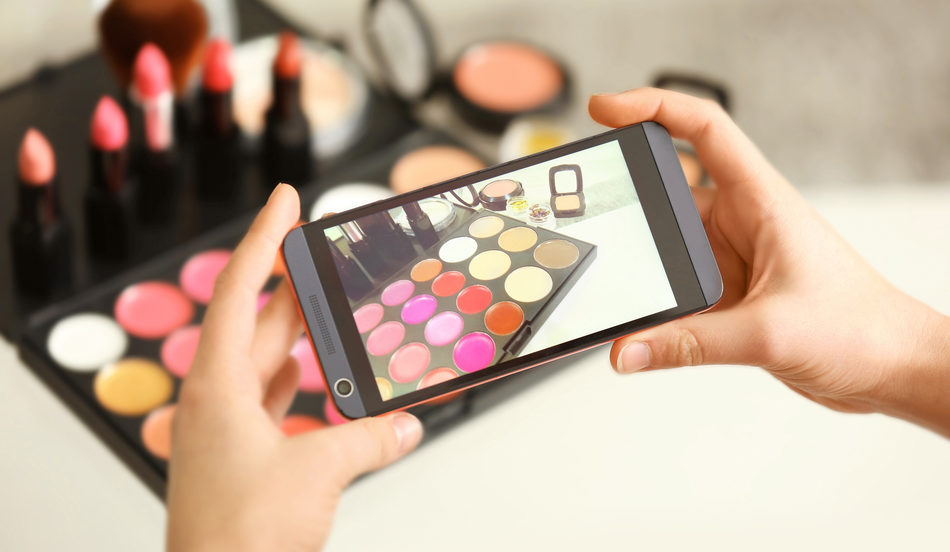Power Points
- Consumers value visual UGC across product categories, from food and beverage to health and beauty.
- One of the easiest ways for brands to generate visual UGC quickly and consistently is with social curation.
- Social curation – or the process of sourcing real-life imagery and videos of your products from social channels like Instagram – can help brands establish trust, lift conversions, and stimulate product discovery.
From window displays to television commercials, shoppers have always placed a high value on visual content. That’s not anything new. We’re visual creatures, after all.
What is new is the type of visual content shoppers value. User-generated visual content has become increasingly important to consumers. 94% of shoppers seek out visual UGC at least sometimes. One in four shoppers always seek it out.
“But aren’t our photos enough?” you may ask. No, they’re not. Today, 80% of consumers say photos from other customers are more valuable than those provided by brands or retailers. That’s a big increase from five years ago, when only 44% felt this way.
What’s more, 54% of consumers say company-generated product photos are “unhelpful” and actually dissuade them from buying.
Fashion brands have embraced the power of UGC for years, mining their social media channels for customer images to share on their own websites and marketing materials.
We have a newsflash for you: this process, which is known as social curation, is no longer just for fashion brands. Increasingly, consumers expect to see visual UGC content across product verticals. Nearly 40% of online grocery shoppers, for example, seek out customer-submitted imagery and videos. From CPG to health and beauty, consumers want to see more imagery from other customers.
Read on as we explore the power of social UGC for non-fashion brands, complete with real-world examples.
What is social curation?
Social curation is the process of sourcing product images posted by your customers on Instagram, and then displaying it through your own website to provide social proof and lift conversions. Here’s how it works.
88% of consumers specifically look for visuals (such as photos or videos) submitted by other consumers prior to making a purchase.
Step 1: Choose your collection criteria
The first step is choosing how you’ll collect the images from social media. With PowerReviews, you can designate certain @mentions, @tags, and #hashtags to source content from, such as mentions of your brand name or a campaign-specific hashtag.
It can be helpful to be specific with this (e.g. #BrandNameLove vs. #OOTD), as that ensures you generate more relevant content that actually features your products. For example, Duraflame uses the hashtag #BetterByTheFire:
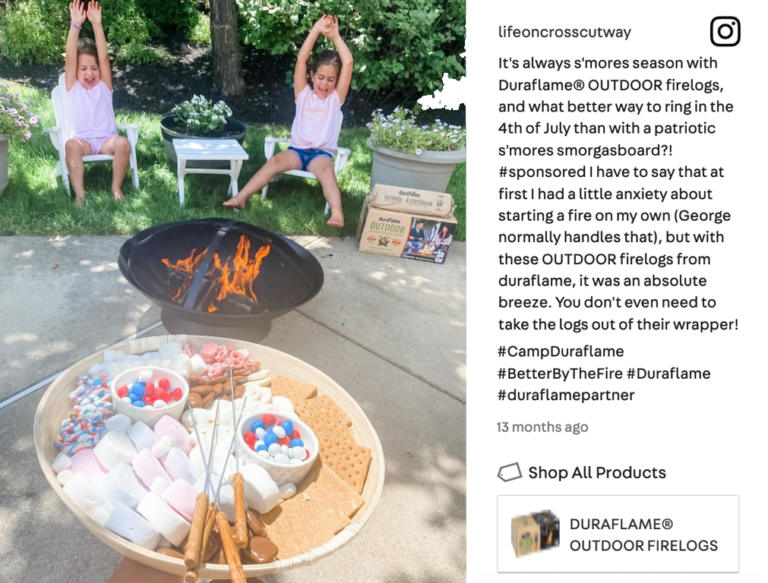
Step 2: Get permission
You’ll need to get permission from consumers before using their photos or videos across your website or in other marketing materials. Work with your legal team to establish a Terms and Conditions page, and link to this page whenever you ask for permission.
Always be sure to attribute your customers’ content to them, such as linking to their Instagram page or including a caption like “Photo courtesy of [insert Instagram handle]. Here’s an example from Janie and Jack:
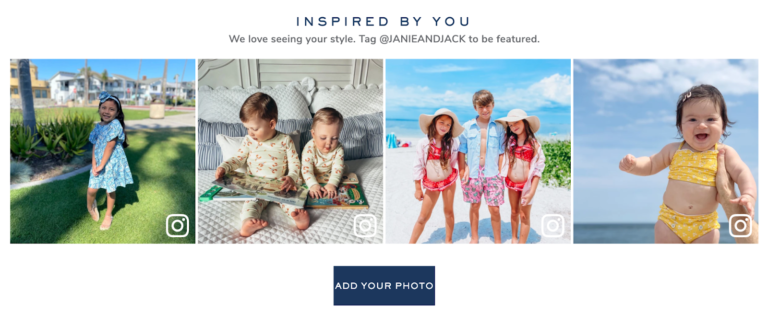
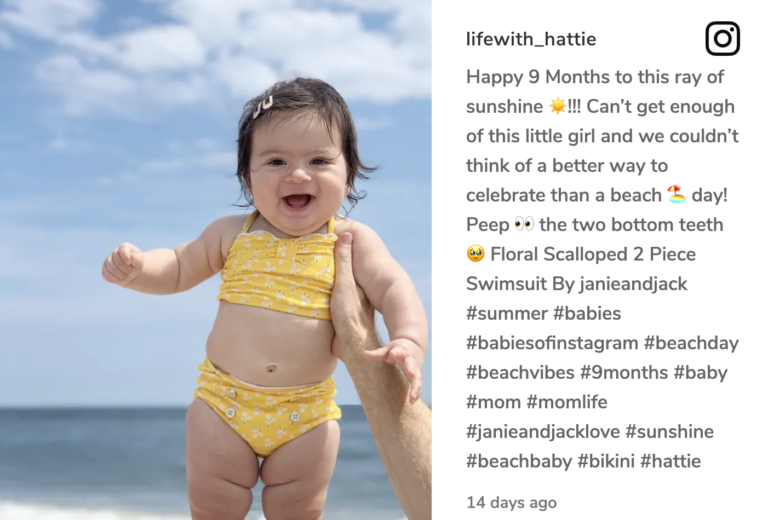
Step 3: Encourage customers to post
Once you’ve taken care of the legal p’s and q’s, it’s time to promote your campaign. Encourage customers to post photos with your products via email campaigns, social media posts, product packaging, billboards, and anywhere else you communicate with your customers. Give them some tips for how you want them to post, such as the hashtag they should use, and to be sure they’re actually featuring your products in their post. Here’s an example from Benefit Cosmetics:
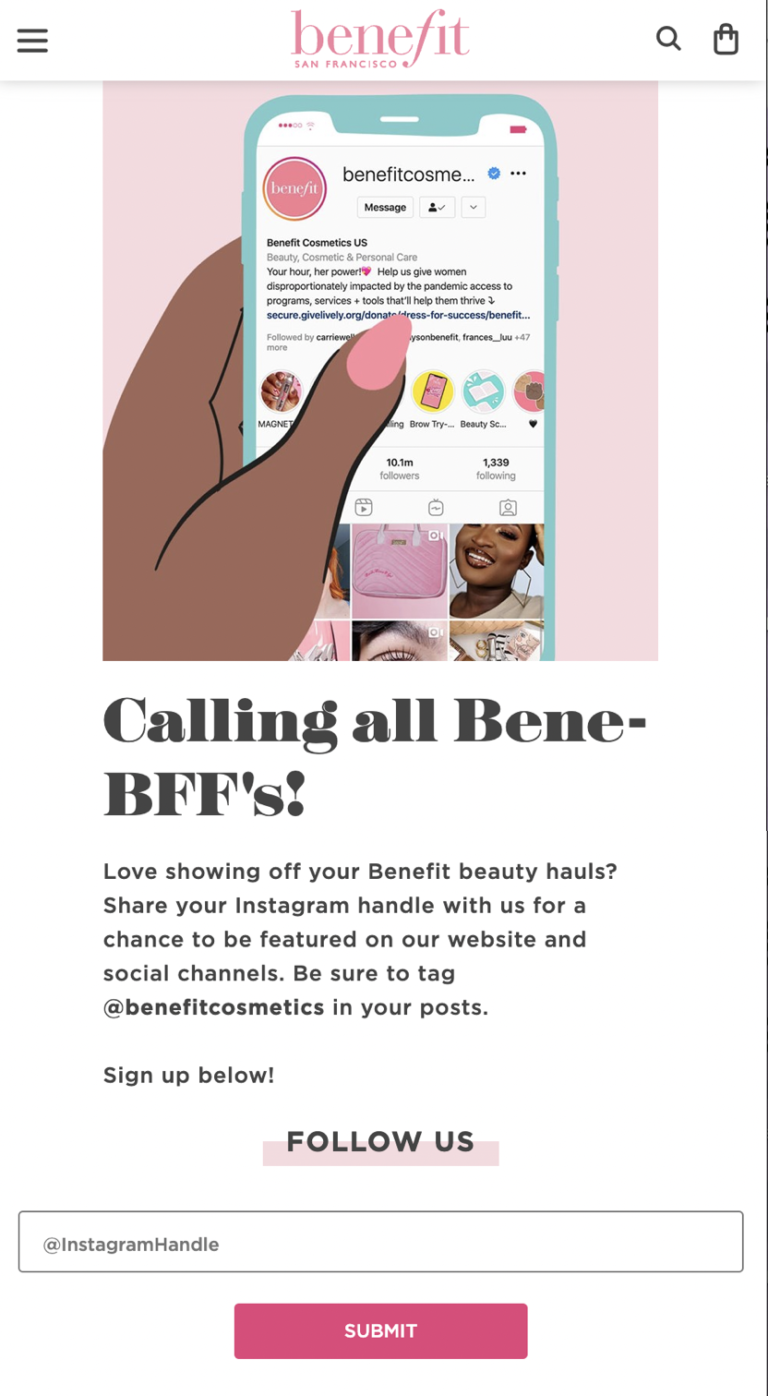
Step 4: Reshare the images on your channels
Next, it’s time to put that social content to work! Once you have your customers’ permission, you can reshare their images on your:
- Product pages
- Home page
- Category pages
- In-store displays
- Marketing emails
- Advertisements
- Social media channels
Step 5: Analyze your performance
Want extra credit? Monitor the performance of your social content. Who are your top creator contributors? What products are featured more, or less, often? How is the photo quality? Knowing the answers to these questions can help you find ways to improve your campaigns and collect more effective social imagery.
5 powerful benefits and use cases of social UGC
How important is social imagery, really? Visual media is so important to consumers that they overwhelmingly rate images as the most valuable part of any individual review, even above the review length, title, and aggregated pros and cons lists.
Let’s take a look at some of the value brands and retailers can derive from curating and sharing social UGC.
1. Generate more conversions and sales.
More than half of consumers say imagery provided by previous purchasers is a top factor influencing their purchase decision. When people interact with visual UGC, their conversion rate doubles. Our latest data shows a 106.3% lift in conversion among visitors who interact with user-generated imagery on a product page. That’s a significant increase from the conversion lift of 91.4% found the year prior, indicating the increasing impact of user-generated imagery on purchase behavior.
Imagery interactions that are particularly impactful on conversion include:
- Clicking on the image gallery (110.7%)
- Clicking to view the next image/video (103.6%)
- Clicking to see the previous image/video (96.4%)
Further, our research shows that consumers who spend more online are more likely to “always” seek out visual content within reviews. 35% of consumers who spend $2,000+ online each month always seek out visual content within reviews, compared to 20% of those who spend $250 or less monthly.
Benefit Cosmetics curates photos from their own social feed featuring real customers. They include the precise shade and product used in each image, enabling shoppers to see how the different shades look on different people.
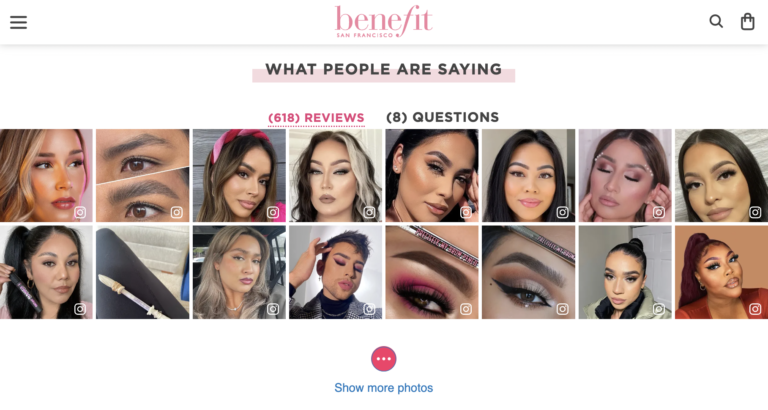
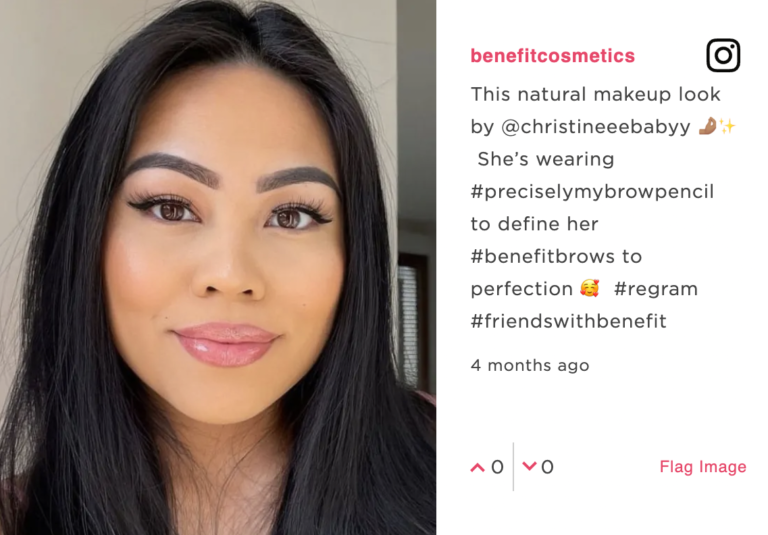
2. Provide the authentic content consumers crave.
57% of shoppers read reviews to find imagery or photos of the product from a real-life shopper. Several of the top reasons consumers value visual UGC speak to authenticity:
Visual UGC that is collected from social media authenticates your marketing claims and provides powerful social proof. Not only are your customers willing to write a rave review, they’re so passionate that they’re happy to promote your brand on their social media pages.
There’s another added benefit to social image curation. Almost everyone, whether or not they’re an influencer, treats their social media like they are an influencer. That means you get to collect influencer quality content without the pricey cost of maintaining an influencer relationship.
Here are two examples of social UGC, one from a beauty influencer for Babor and another from an everyday customer of Soylent. Both are persuasive and feature the product in an authentic light.
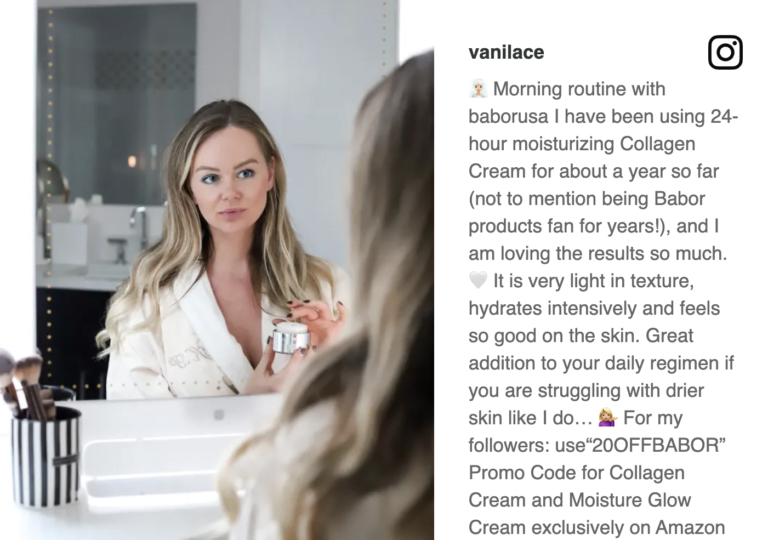
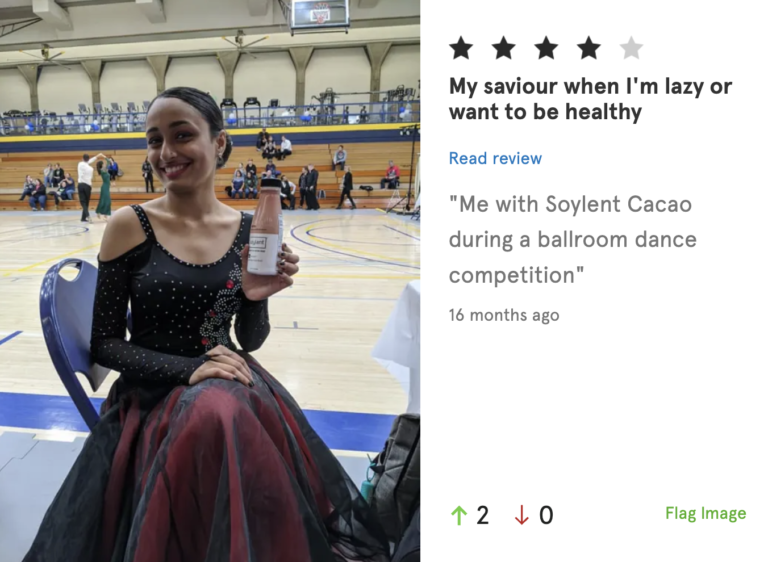
3. Make inroads with younger demographics.
Visual UGC is especially important to younger consumers, with 91% of Gen Z’ers and 84% of Millennials always or regularly seeking it out. In fact, a third of Gen Z shoppers and nearly a quarter (21%) of Millennials won’t purchase a product if there is no visual content from people who previously bought it.
Soylent recognized that social media is the essential medium for targeting a younger audience. The brand found that 100% of customers who go to their site look at their image gallery. This knowledge has helped them grow their business, launch new flavors, and expand to new retailers.
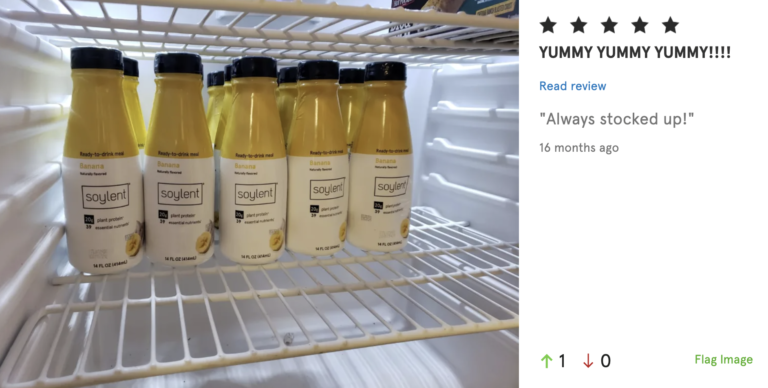
4. Share recipes and inspiration.
With all of the food influencers out there, there is a huge opportunity for CPG and grocery brands to pull in their content to their product pages. These creators dream up yummy recipes and show off the results on social media. By curating images like these from social media, your brand can inspire other shoppers.
Canyon Bakehouse’s product pages are filled with the types of images we’re talking about. They feature their customer’s delicious creations on the product pages, offering different ideas for how shoppers can use their gluten-free bread. “Social curation has allowed us to add a lot of color and credibility to the product display pages on our site,” shared Katie Pusateri, Marketing for Canyon Bakehouse.
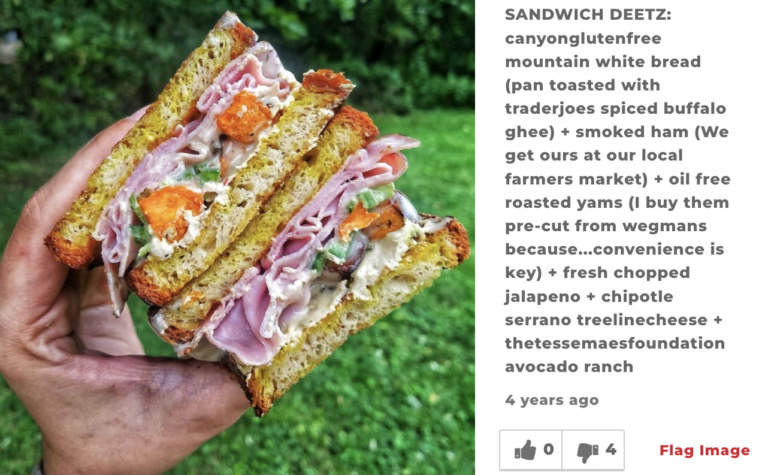
5. Stimulate product discovery and inspire purchases.
With social curation, you can display shoppable customer image galleries on your site wherever you need to provide social proof, enable product discovery, and inspire sales.
You can reuse these images in marketing materials across your website and email. You can even get really meta and showcase reviews in your social media, only to curate those same images right back on your product page, like Indie Lee does. It’s like the movie Inception for UGC!
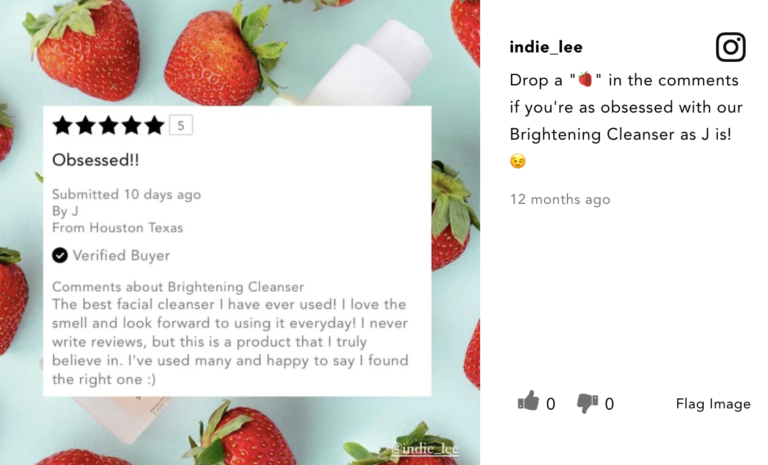
The #1 reason shoppers value visual UGC is to see what the product looks like in real life. Another popular reason is to understand how the product performs. By curating images from social media that include their branded hashtag, Beauty Brands enables shoppers to easily see how their product works for a wide range of hair colors, styles, and lengths. This helps build trust and inspire purchases for a wider range of shoppers than a simple product photo gallery could ever provide.
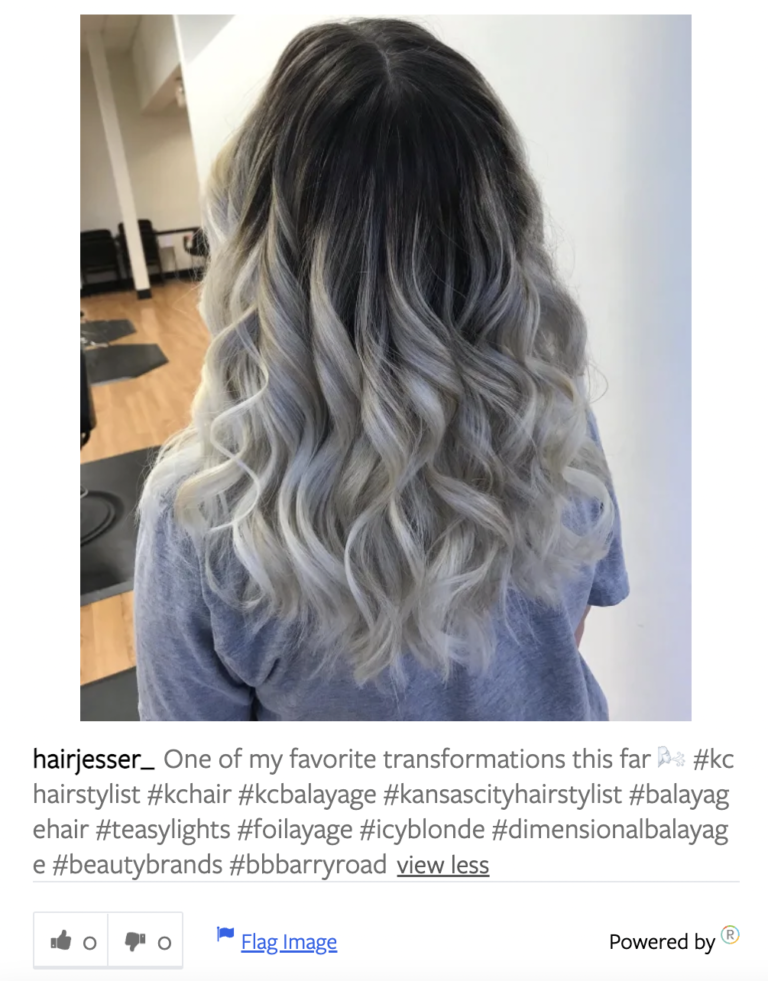
How to gather more social UGC
How many images is enough? You can never have too many images. Fortunately, when you’re collecting images from social media, you tap into an endless supply of creative and beautiful imagery created by real customers.
If you’re looking for hard numbers, though, check out our latest benchmark study on visual UGC. Independent of vertical, the average product has 12.8 images or videos. However, what’s typical can vary by vertical. The typical food and beverage product has 14 images or videos, on average, while CPG products have 20 images or videos, and health & beauty products have 23 images or videos.
The key, of course, is to have strong visual UGC coverage across all your products. Get started with these four tips for getting the most out of your visual UGC.
Reward reviewers for adding a photo or video.
From free samples to free discounts, up to 86% of customers need an incentive to leave a review.
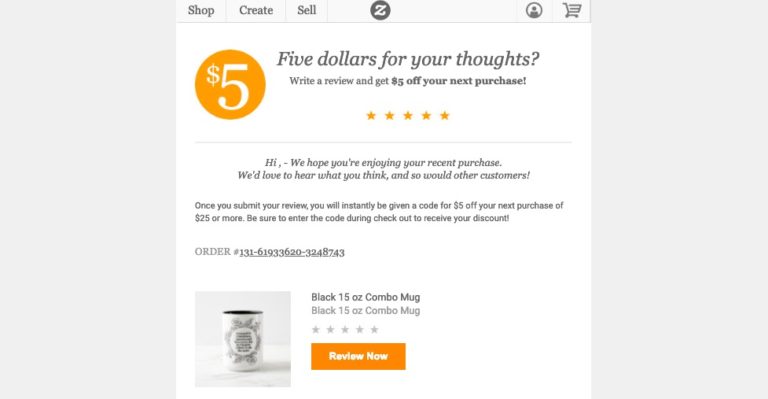
Make your galleries easily searchable.
Over three-quarters (77%) of shoppers find filtering options useful when browsing review content. Include a filter for reviews that feature visual UGC.
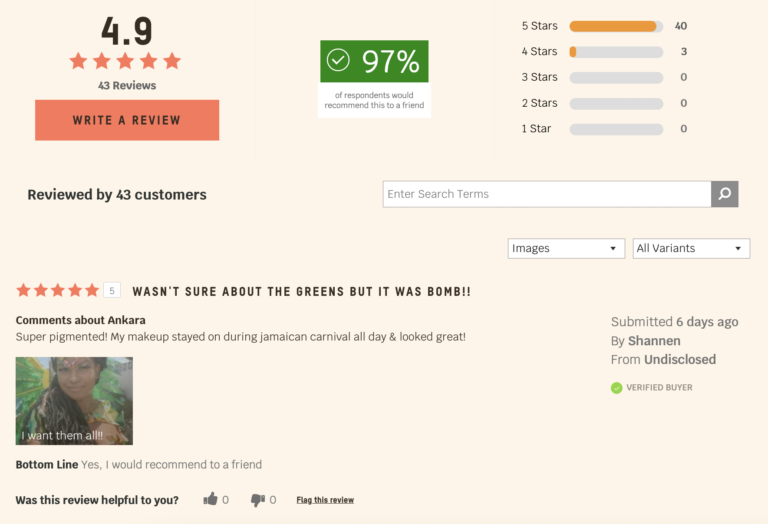
Include social links in your review form.
Make it easy for reviewers to add social UGC, by letting them upload photos from their Facebook or Instagram page.
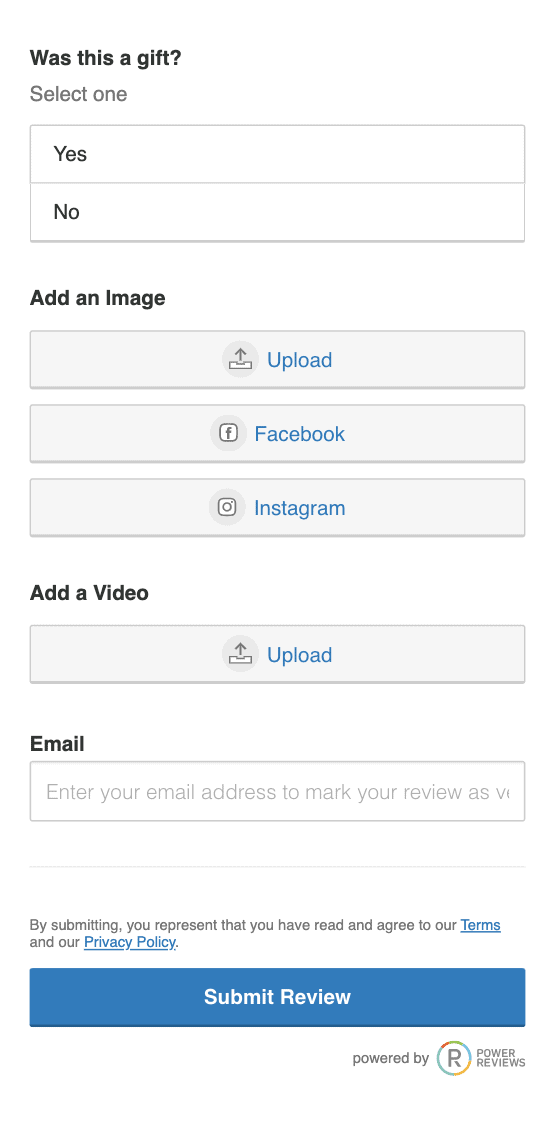
Use social curation.
With PowerReviews Social Curation, brands and retailers capture 221% more images and videos. You can collect images posted with specific hashtags, from both your brand and customers. Suja Juice includes images from their brand account as well as fans in their review snapshot.
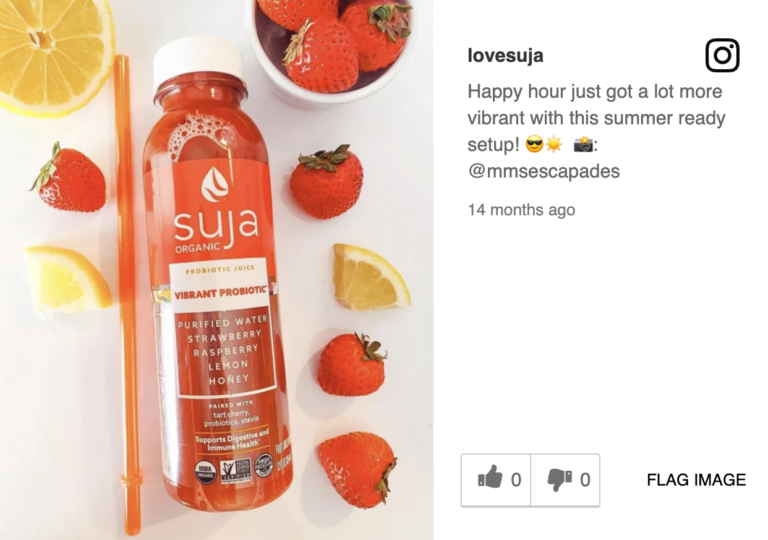
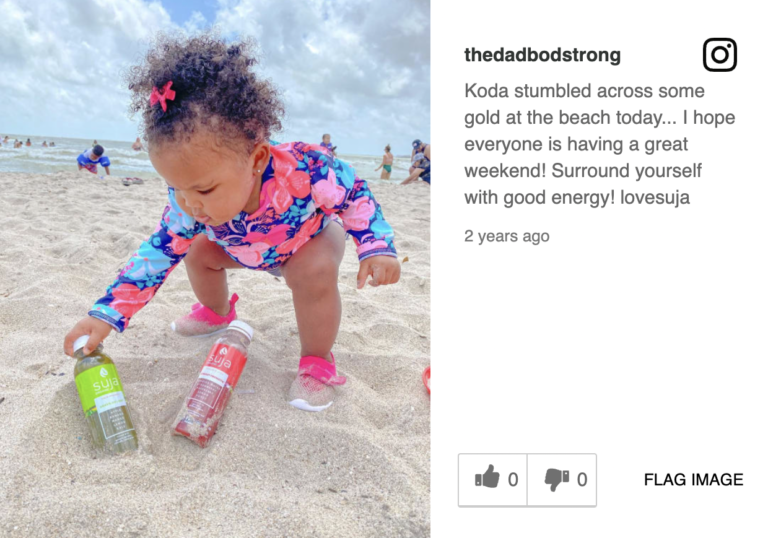
Unlock the power of social UGC
Social media is not just for sharing; it’s for selling. The brands who recognize this have a clear competitive advantage. They’re the ones who are collecting native content from their customers, showcasing it on their site, and leveraging it to boost sales and engagement. Adopt an image-first mindset today, and watch as your brand connects with – and sells to – customers better than before.

